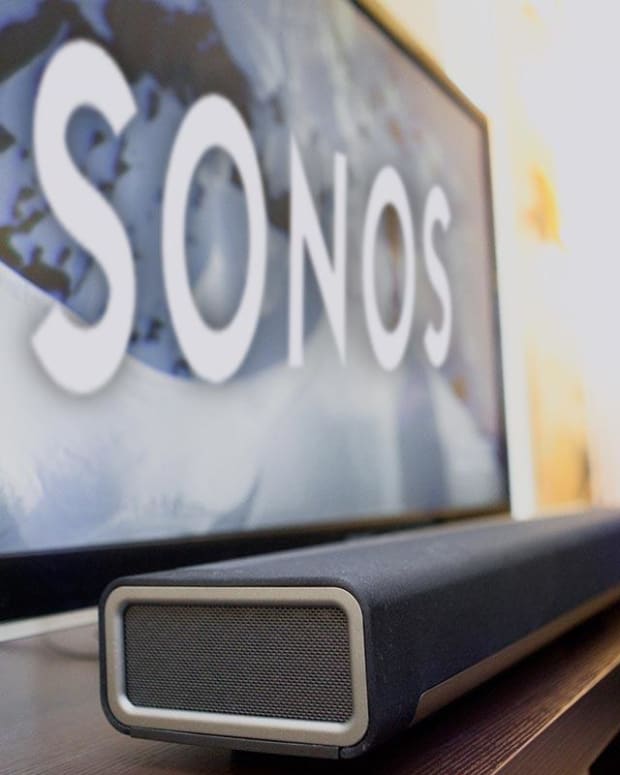Nvidia and AMD - Chip Sector's Biggest Deals Still Have High Hurdles to Climb
Semiconductors have been the subject of broad attention, not only from investors but from governments across the world. In many respects, this has been beneficial to many companies as they seek to benefit from governmental efforts to shore up supply chains. However, a more nationalistic tenor in the semi sector could also cut against many companies, particularly as mergers and acquisitions in the industry accelerate.
“I think the risk for semiconductor deals in general is certainly increasing in this environment,” Edward Jones senior equity analyst Logan Purk told Real Money. “More of a nationalistic stance with semiconductor production and the cold relationship between the U.S. and China will weigh on the probability of deals getting approved.”
Foremost among those firms at risk are two of the most popular stocks on U.S. exchanges - Nvidia (NVDA) - Get Report and Advanced Micro Devices (AMD) - Get Report.
Not So Fast for Nvidia?
Raising the most eyebrows for regulators, as well as those lobbying those regulators, is Nvidia’s blockbuster deal to wrest U.K.-based chip designer Arm from the Masayoshi Son-led SoftBank. The $40 billion deal, one of the largest acquisitions in the history of the semiconductor industry, was noted as yet another step in Nvidia’s push toward advancement in artificial intelligence (AI) and Internet of Things (IoT) technology.
“AI is the most powerful technology force of our time and has launched a new wave of computing,” Nvidia CEO Jensen Huang said as the deal was signed. “In the years ahead, trillions of computers running AI will create a new internet-of-things that is thousands of times larger than today’s internet-of-people. Our combination will create a company fabulously positioned for the age of AI.”
Yet, Arm’s bread and butter is found in its chip designs for mobile phones, making consolidation and potential threats to its broad licensing model a major red flag. Indeed, companies like Qualcomm (QCOM) - Get Report, Apple (AAPL) - Get Report, Microsoft (MSFT) - Get Report and a consortium of Chinese firms led by Huawei’s semiconductor subsidiary HiSilicon and the Semiconductor Manufacturing International Company were quick to raise complaints.
These complaints have not fallen on deaf ears either, as regulators across the globe have opened investigations of the deal on both competitive and national security grounds. Both the U.K. and Chinese regulatory reviews lately have intensified, according to reports from the Financial Times.
“Nvidia is looking to buy a company that is putting their chips in basically 95% of handsets worldwide,” Edward Jones’ Purk explained. “That spooks a lot of governments as there would be a U.S. company that could essentially control that entire chip market.”
The risk is likely most pressing for China, as increased Sino-American tensions could curtail its ability to utilize Arm's critically important designs. Recent experiences with the blacklisting of key technology exports to Chinese firms is likely to influence the review, as such a shutdown of exports could crush the nation’s smartphone industry. It may not come down to China’s notoriously difficult regulators in the end, however.
According to Bloomberg, U.K. regulators could be first to act as apprehensions about national security look likely to quash the deal. What Nvidia might pursue with the amount of cash freed-up from a deal’s failure remains uncertain, though its appetite for more M&A may be significantly tempered after tumultuous experiences with both Arm and its prior acquisition of Mellanox. For Arm, this means a blockbuster initial public offering is increasingly likely.
For Nvidia, buybacks might be a better bet, as semi-sector competitor Qualcomm’s experience with failed takeovers might suggest.
Nvidia Will Win on Arm Holdings, Deal or No Deal, Jim Cramer Says
Smoother Sailing for Xilinx Deal
TheStreet Recommends
However, Nvidia’s rocky road with regulators is not indicative of all M&A action in the sector. As a clear contrast, AMD’s $35 billion all-stock deal for Xilinx (XLNX) - Get Report appears significantly less clouded by such concerns.
“[We are] reiterating expectations for the deal to close by the end of 2021,” Cowen analyst Matthew Ramsay told investors in a recent note. “Strategically, we remain very supportive of the merger.”
In terms of strategy, he noted that Xilinx will add “diversity, scale, and customization” to AMD’s existing offerings, particularly aiding in its high-performance computing aims.
Ramsay’s forecast on the timeline also looks promising, as his support is likely to be supplemented by regulators who are unlikely to have any apprehensions about national security and competition that could hold up Nvidia’s deal. In fact, the acquisition has already gained approval in the UK and EU, while clearing an Federal Trade Commission review in the U.S.
In these reviews, the regulatory entities also noted there was no significant competitive outcry in the same fashion as was seen in Nvidia’s Arm acquisition.
“The large majority of third parties that responded to the CMA’s merger investigation did not express concerns regarding the Merger and some suggested that the Merger would be pro-competitive,” the U.K.’s Competitive Markets Authority said in its detailed review of the deal. “Consequently, the CMA does not believe that it is or may be the case that the merger may be expected to result in a [substantial lessening of competition] within a market or markets in the United Kingdom."
While China is the last leg of the regulatory journey and is often the locale where deals go to die, the deal reportedly has been advancing in the Far East as well. As such, a year-end closing date could well be right on track despite lingering anxiety about the ongoing tech-focused trade war.
Overall, the rosy outlook for approval and accretive combination is, by all accounts, good news for both AMD and Xilinx investors. Yet, the same cannot be said for key AMD competitor Intel (INTC) - Get Report, which has been a consistent share-loser amid AMD’s meteoric rise.
AMD Is Basically 'Pantsing' Intel, Jim Cramer Says
Xilinx's entrance under the AMD umbrella adds key competition to Intel in terms of Field Programmable Gate Arrays (FPGAs), a versatile category of programmable logic devices that are crucial to specialized CPU functionality and the progression of cutting-edge technology like 5G.
Given Intel made a costly foray into FPGAs with a $16.7 billion acquisition Altera only a few years ago, the competition between the two companies is likely to heat up further. Ironically, it might be this very competition that removes potential regulatory roadblocks. If history is to offer instruction, it may be an acquisition that only adds to woes for Intel investors as the deal looks evermore likely to come to fruition.
"This deal further complements AMD's portfolio by adding FPGAs to their lineup and presents a further inroad into Intel's business given it plays [in FPGAs] as well," Edward Jones' Purk concluded. "AMD looks positioned to continue to take share from Intel.
Curran is long shares of Xilinx.
Nvidia and AMD are holdings in Jim Cramer's Action Alerts PLUS member club. Want to be alerted before Jim Cramer buys or sells the stocks? Learn more now.









